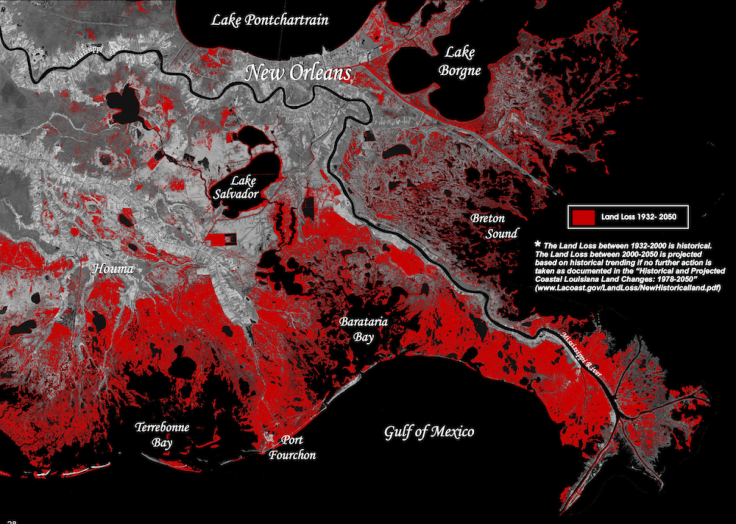Louisiana State Agency In Charge Of New Orleans Flood Protection Sues 97 Oil Companies, Including Koch Industries, Exxon And Subsidiaries Of Chevron, BP And Royal Dutch Shell Demanding They Fix Damages To Wetlands That Protect Communities From Floods


The Louisiana state agency in charge of flood protection in and around New Orleans on Wednesday sued 97 oil, gas and pipeline companies demanding they restore damages incurred by flood-protecting wetlands and provide funds to compensate for past damages, a sum that could run into the billions of dollars.
In its lawsuit filed at the New Orleans Civil District Court, the Southeast Louisiana Flood Protection Authority–East included big names in the industry, such as Exxon Mobil Corporation (NYSE:XOM), Chevron Corporation (NYSE:CVX), Koch Industries Inc. and U.S. subsidiaries of BP PLC (NYSE:BP) and Royal Dutch Shell PLC (NYSE:RDS.A).
“Oil and gas activities continue to transform what was once a stable ecosystem of naturally occurring bayous, small canals, and ditches into an extensive – and expanding – network of large and deep canals that continues to widen due to defendants’ ongoing failure to maintain this network or restore the ecosystem to its natural state,” said the petition (read the full lawsuit here).
The suit argues that most of the damages to wetlands occurred under contracts that require operators to maintain canals and restore ones that fall into disuse; that under the Rivers and Harbors Act that prohibits activities that impair the effectiveness of levees; and that civil law prohibits activity on property that floods other people’s property.
John Barry, vice president of the Southeast Louisiana Flood Protection Authority—East, dismissed concerns this lawsuit would scare away energy-related activities in the oil and gas rich region.
“They [oil and gas concerns] will leave the state when the oil goes away,” Barry told the New Orleans-based Times-Picayune, which said a portion of the damages could be used to help fund the authority’s obligations under a $14.6 billion levee improvement program by the Corps of Engineers, the federal agency responsible for flood protection infrastructure that was largely blamed for the failures of the levees during Hurricane Katrina in August 2005 that killed over 1,800 people and inflicted over $100 billion in damages to the U.S. Gulf Coast region.
The erosion of wetlands is a key factor in coastal flood protection. The estimated 10,000 miles of canals that crisscross Southern Louisiana where the Mississippi dumps its sediment causes salt water incursion that kills vegetation that thrives in brackish water that acts as a barrier that absorbs the brunt of storm surges.
Nobody disagree that the loss of wetlands has played a key factor in exposing previously unexposed communities to flood damages; however, the energy sector is a vital segment of Louisiana’s economy and it has staunch defenders in government and the private sector.
The award-winning Nola Lens investigative website says the lawsuit will rest ultimately on science.
“If they believe the expert scientific testimony given by our witnesses, then we win the lawsuit,” Gladstone N. Jones, III, of Jones, Swanson, Huddell, and Garrison LLC, the lawyers representing the plaintiff in the lawsuit told The Lens.
Devon Boutte, a former Louisiana State University graduate student, created this .gif showing the proliferation of oil and gas wells in the region. It underscores the extent of oil and gas drilling in an area that’s not just ecologically sensitive but that protects people’s homes and properties from the ravages of hurricanes:

Image: Devone Boutte via The Lens.
© Copyright IBTimes 2024. All rights reserved.












